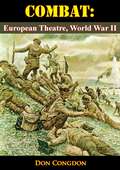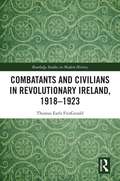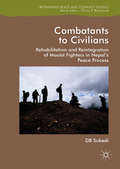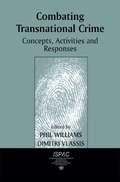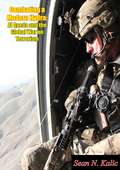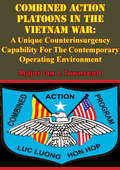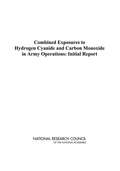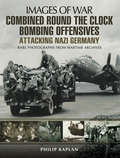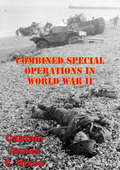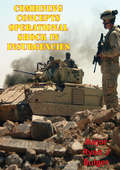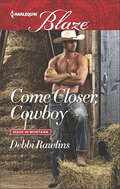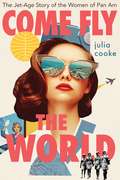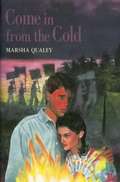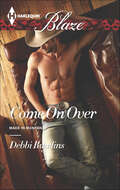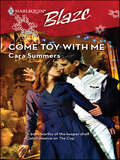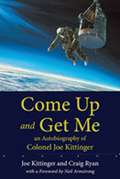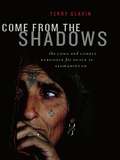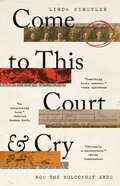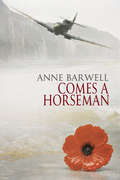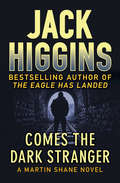- Table View
- List View
Combat: European Theatre, World War II (American Civil War Ser.)
by Merle Miller Don CongdonFrom El Alamein to the breaching of the Siegfried Line, here are the major battles, unforgettably recorded by the men who fought them.EUROPEAN THEATER, 1940 to 1945From the over-all view of grand strategy to the fox-hole view of the individual rifleman, these authoritative accounts recreate with immediacy and in full dimension the historic battle for Europe.THE CHASE OF THE BISMARCKBEHIND ROMMEL'S LINESATTACK AT EL ALAMEINRAID ON REGENSBURGTHE BATTLE FOR CASSINOANZIO TO ROMEAIR DROP ON NORMANDYOMAHA BEACHBREAKOUT AT ST. LÔTHE HÜRTGEN FORESTBASTOGNE THE CAPTURE OF REMAGEN BRIDGESMASHING THE SIEGFRIED LINEand other battlesComplete with maps and running commentary, this is a companion volume to COMBAT: PACIFIC THEATER-WORLD WAR II.
Combatants and Civilians in Revolutionary Ireland, 1918-1923 (Routledge Studies in Modern History)
by Thomas Earls FitzGeraldThis book is based on original research into intimidation and violence directed at civilians by combatants during the revolutionary period in Ireland, considering this from the perspectives of the British, the Free State and the IRA. The book combines qualitative and quantitative approaches, and focusses on County Kerry, which saw high levels of violence. It demonstrates that violence and intimidation against civilians was more common than clashes between combatants and that the upsurge in violence in 1920 was a result of the deployment of the Black and Tans and Auxiliaries, particularly in the autumn and winter of that year. Despite the limited threat posed by the IRA, the British forces engaged in unprecedented and unprovoked violence against civilians. This study stresses the increasing brutality of the subsequent violence by both sides. The book shows how the British had similar methods and views as contemporary counter-revolutionary groups in Europe. IRA violence, however, was, in part, an attempt to impose homogeneity as, beneath the Irish republican narrative of popular approval, there lay a recognition that universal backing was never in fact present. The book is important reading for students and scholars of the Irish revolution, the social history of Ireland and inter-war European violence.
Combatants to Civilians: Rehabilitation And Reintegration Of Maoist Fighters In Nepal's Peace Process (Rethinking Peace and Conflict Studies)
by D. B. SubediMuch has been written about reintegration of ex-combatants in a traditional or conventional disarmament, demobilisation and reintegration (DDR) programme. This volume examines reintegration of ex-combatants in a un-conventional DDR in which a cash-based scheme replaced a reintegration programme. It uncovers the dilemmas surrounding the un-conventional DDR programme in Nepal, situating the phenomena in the divisive politics of war to peace transition. Drawing on the narratives and perceptions of ex-combatants and their families, the volume provides a compelling analysis of why some ex-combatants reintegrate socially and economically better than others at the end of a war. Analysing the consequences and effects of reintegration of Maoist ex-combatants in the post-conflict peace and security, the volume argues that cash-based schemed in DDR programme can pacify ex-combatants and de-politicise a DDR programme but cash alone can not reintegrate ex-combatants.
Combating Jihadism: American Hegemony and Interstate Cooperation in the War on Terrorism
by Barak MendelsohnThe book examines how the presence of a hegemonic state affects international cooperation, security, and international relations and argues that winning the war against terror is such state that takes the lead and generates cooperation among states to fight jihad.
Combating Terrorism in Northern Ireland (Political Violence)
by James DingleyThis edited book analyses the lessons which can be drawn from Northern Ireland’s experiences of combating terrorism. The essays in this volume unite analysis and practice in exploring both the conflict in Northern Ireland and the internationally applicable counter-terrorism lessons which can be drawn from the response to it. The contributors, all specialists in their fields, make a theoretical analysis of the underlying causes of terrorism, and explore how this interacts with the development of effective operations and policy responses. The book emphasises the socio-economic and socio-cultural dimensions underlying the problem of terrorism, arguing that short-term, violent/military responses can in fact exacerbate the problem. It highlights the complexity of terrorism as a social phenomenon, and outlines the multi-faceted approach needed to combat it.
Combating Tobacco Use in Military and Veteran Populations
by Institute of MedicineThe health and economic costs of tobacco use in military and veteran populations are high. In 2007, the Department of Veterans Affairs (VA) and the Department of Defense (DoD) requested that the Institute of Medicine (IOM) make recommendations on how to reduce tobacco initiation and encourage cessation in both military and veteran populations. In its 2009 report, Combating Tobacco in Military and Veteran Populations, the authoring committee concludes that to prevent tobacco initiation and encourage cessation, both DoD and VA should implement comprehensive tobacco-control programs.
Combating Transnational Crime: Concepts, Activities and Responses
by Phil Williams Dimitri VlassisThis work examines the challenges posed by transnational crime and the steps being taken by the international community to meet these challenges. It offers comprehensive analysis of different forms of transnational crime and the various responses that are being developed.
Combating a Modern Hydra: Al Qaeda and the Global War on Terrorism
by Sean N. Kalic“This study by Mr. Sean Kalic, of the Department of Military History, US Army Command and General Staff College, examines modern transnational terrorism from the 1960s to the present day, with special emphasis on the adaptation Al Qaeda and other non-state actors have taken in response to the actions of the United States and its allies. This work provides a cautionary warning about the likelihood Al Qaeda will continue to survive and execute missions in the current operating environment. […] As the US Army continues its efforts in combating terrorists, the thoughts found in this narrative are well worth considering.”—THOMAS T. SMITH, Director, Combat Studies Institute
Combined Action Platoons In The Vietnam War: A Unique Counterinsurgency Capability For The Contemporary Operating Environment
by Major Ian J. TownsendIn Vietnam, the III Marine Amphibious Force used Combined Action Platoons (CAPs) as one part of its operational level counterinsurgency campaign. These platoons provided security assistance to the South Vietnamese Popular Forces and civic action to the village based population. To measure the operational effectiveness and the current relevancy of this specific type of combined action their activities are evaluated against current Army counterinsurgency doctrine. This monograph demonstrates the value of the CAPs as one element in the context of a counterinsurgency campaign, and how this form of combined action may serve as a tool for Army commanders conducting operational art in future. Independent operations are not the future of American warfare in the 21st Century. Contemporary thought about the future of American warfare is that the "conventional forces of the United States Army will have an enduring requirement to build the security forces and security ministries of other countries." Some form of combined action will be a required in American military operations for the foreseeable future. Given this truth, CAPs provide a practical historical example of a combined action technique that can serve as a tool for the future.
Combined Exposures to Hydrogen Cyanide and Carbon Monoxide in Army Operations: Initial Report
by National Research Council of the National AcademiesIn response to a request from the U.S. Army, a committee convened by the National Research Council (NRC) conducted the first in a sequence of studies evaluating the combined health effects of low-level exposure to two chemicals Army personnel are likely to be exposed to in firing tank weapons. The Army sought information on whether the two chemicals, hydrogen cyanide and carbon monoxide, result in similar health impacts and should be assessed together when establishing exposure limits. Based on a review of the scientific literature, the report finds that the biochemical health impacts of the chemicals are similar and that the Army's proposed approach to setting exposure limits is appropriate. Because previous research has focused on high exposures, this initial NRC report recommends that futher neurological studies at low concentrations of exposure to the chemicals be conducted.
Combined Operations; The Official Story of The Commandos
by Hilary St. George Saunders MCThis is an astonishing, absolutely absorbing account of the accomplishments of those picked men from the Royal Navy, the British Army, and the Royal Air Force, who work with U.S. Rangers and others of the United Nations in what is known officially as Combined Operations--or, more popularly, the Commandos. So far as possible, without giving aid to the enemy, it is the complete story of the Commandos since the very beginning of their activities, commencing with the experimental attacks on Norwegian islands, and proceeding with more ambitious attempts on the Continent. In quick succession follow highly dramatic accounts of the assault on southern Italy, the evacuation of Crete, the defeat of the French in Syria, the daring penetration of the enemy's line in Libya--culminating in the suspenseful stalking of Rommel's headquarters--the assault on St. Nazaire, the capture of Madagascar, the Dieppe raid, the invasion of North Africa.The book is utterly without heroics, and yet is all heroism. The reader marvels at the terrible efficiency, the terrible simplicity, the terrible courage and the awesome nonchalance of the British Royal Navy and Army and R.A.F. men who participate in these raids.The author has the true narrator's gift--a style which is direct, authentic, episodic in a high degree, and stirring from beginning to end. The inspiring scenes he describes keep recurring to the reader long after the book has been laid aside.
Combined Round the Clock Bombing Offensive: Rare Photographs From Wartime Archives (Images of War)
by Philip KaplanIn World War Two, the most effective fighting units were usually small submarine crews, infantry platoons, commandos, and bomber crews. Of these it could be said that the men who crewed the bombers caused more damage to the enemy and had a greater impact on the outcome of the conflict than any number of the rest. Most of the aircrews were volunteers (in the RAF, they all were), intelligent, fit, and highly trained. Each knew he was essential to the team; he knew that a mistake by anyone could mean the death of all. Their interdependence was a welding influence. This library of rare archive photography provides a pictorial history with which to better understand the true extent of Allied operations during the second half of the Second World War, after America had fused its allegiance and the Allied contingent fired itself up for a reactionary attack against Nazi Germany, following a series of defeats and setbacks at their hands during the first half of the war. First-hand accounts from both American and British bomber pilots feature. An account of the dramatic attack at Peenemunde is included as well as a host of accounts of the 3 December 1943 RAF bombing raid on Berlin. They work to create a real sense of precisely what 'round the clock' actually meant, as these concentrated attacks drained pilots of every ounce of energy they possessed.
Combined Special Operations In World War II
by Captain James C. NixonThis study is an historical analysis of combined special operations units in the European Theater during World War II. The study examines the Dieppe Raid Force, the First Special Service Force, and the Jedburghs to determine common strengths and weaknesses in organization, training, command and control, and effectiveness. The study also analyzes the adequacy of current United States combined and special operations doctrine based on the results of the historical analysis.The study concludes that current U.S. doctrine does not adequately address the organization, training, and command and control of combined special operations. Current doctrine provides sufficient strategic guidance, but requires supporting doctrine at the operational and tactical level. One of the contributing factors is an over-reliance on Operation DESERT SHIELD/DESERT STORM.The study provides planning considerations that should be incorporated into current combined doctrine. The historical examples illustrate the criticality of establishing clear goals and objectives and the use of training to assist in achieving unity of effort. The study also identifies centralized control, clear communications, and coordination as fundamental to successful command and control of combined special operations units.
Combining Concepts: Operational Shock In Insurgencies
by Major Ryan J. BulgerThe focus of this work is to ascertain whether the concept of operational shock, which has served as the intellectual underpinning of the US Army's doctrine over the past thirty years, can be used to guide an operational approach in a counterinsurgency campaign. The concept of operational shock sits at the foundation of much of United States Army's operational doctrine. The American way of war now focuses not on the destruction of an enemy's equipment and personnel, but on degrading and disrupting his ability to continue to fight.Much of counterinsurgency doctrine and theory does not fit this operational logic. The previous decade of war has led to a renewed debate both in public and inside the national security apparatus of the United States. With the publication of Field Manual 3-24: Counterinsurgency, the United States produced its first doctrine dedicated to countering insurgency in over twenty years. The logic within FM 3-24 dictates that if the counterinsurgent can dissolve the conditions that enabled the existence of the insurgency, the governmental forces can change the logic of the population.
Come Closer, Cowboy (Made in Montana)
by Debbi RawlinsFriends with very naughty benefits... Mallory Brandt needs a change. The kind of change that makes a gal close her Hollywood bar, move 1400 miles across the country and start a new life in Blackfoot Falls, Montana-in four weeks. Coincidentally, that's how long her oldest friend, Gunner Ellison, has been out of the country...and since they had super-hot, tequila-fueled sex for the first time. And man, Gunner is pissed. Mallory never returned his calls, never told him she was leaving. Now he's shown up in Blackfoot Falls-and he's not leaving until he gets answers. Only problem is, their searing chemistry keeps getting in the way, distracting them both from the feelings they're afraid to acknowledge...and the fact that their friendship will never be the same!
Come Fly the World: The Jet-Age Story of the Women of Pan Am
by Julia CookeGlamour, danger, liberation: in a Mad Men–era of commercial flight, Pan Am World Airways attracted the kind of young woman who wanted out, and wanted up Required to have a college education, speak two languages, and possess the political savvy of a Foreign Service officer, a jet-age stewardess serving on iconic Pan Am between 1966 and 1975 also had to be between 5′3" and 5′9", between 105 and 140 pounds, and under 26 years of age at the time of hire.Cooke&’s intimate storytelling weaves together the real-life stories of a memorable cast of characters, from small-town girl Lynne Totten, a science major who decided life in a lab was not for her, to Hazel Bowie, one of the relatively few Black stewardesses of the era, as they embraced the liberation of their new jet-set life. Cooke brings to light the story of Pan Am stewardesses&’ role in the Vietnam War, as the airline added runs from Saigon to Hong Kong for planeloads of weary young soldiers straight from the battlefields, who were off for five days of R&R, and then flown back to war. Finally, with Operation Babylift—the dramatic evacuation of 2,000 children during the fall of Saigon—the book&’s special cast of stewardesses unites to play an extraordinary role on the world stage.
Come In From The Cold
by Marsha QualeyFrom the back cover: "I want yesterday." That's all seventeen-year-old Maud can say when she gets the news about her sister: Lucy's dead, killed in a bomb blast. Without even a body to bury, Maud is left with only questions: How? Why? Why? Maud's search for answers leads her down the same path her sister took. But all she finds are empty words and more questions. Jeff struggles down a separate but parallel path. His brother, a marine, has been called up to Vietnam. To the world, Jeff looks the part of a conservative preppy, but inside, he questions the war. But does questioning the war mean he doesn't support his brother? It's 1969 and life in America has become an angry jumble of patriotism and rebellion, cynicism and hope. Jeff and Maud are caught up in the confusion. All they want is stability. What they get is each other. Hopefully, it'll be enough. Thin Ice, about an orphaned teenage girl who refuses to believe her reliable older brother was killed in a snow boarding accident, by Marsha Qualey, is also in the Bookshare collection.
Come On Over (Made in Montana)
by Debbi RawlinsStaking her claim! Horse trainer Trent Kimball is starting to believe his family's ranch is actually cursed. Still, it's a place to recover from both his recent divorce and a humiliating professional setback. That is, until Shelby Foster shows up, looking far too fine for cowboy country, and informs Trent that she is the owner of the Eager Beaver Ranch! Shelby left everything behind to move to Montana. And she's not about to just walk away! Even if it means sharing a roof with a rude cowboy...temporarily. As they wait for their papers, animosity turns into suggestive teasing. Then it becomes a sexy-sweet temptation neither can resist! Whoever produces the deed keeps the ranch. But will they lose something more important?
Come Toy with Me
by Cara SummersRugged Dino Angelis, navy captain and special ops agent, has the family Sight. But even that couldn't have prepared him for his hungry reaction to Cat McGuire-toy-store owner, smuggling ring suspect...and his new charge.Only, Dino can't believe the sexy woman under his protection is a crook. Not when she can plant a kiss hot enough to melt all his good intentions...For Cat, Christmas is always a hectic season. But this year she's agreed to a fake engagement, too, just to keep the family peace. It wouldn't be so bad, if only Cat could keep her hands off her new fiancé. After all, he's strong, he's sexy...he's the perfect boy toy. Or he is-until Cat discovers she's just another one of his assignments....
Come Up And Get Me: An Autobiography Of Colonel Joseph Kittinger
by Joseph W. Kittinger Craig RyanA few years after his release from a North Vietnamese prisoner-of-war camp in 1973, Colonel Joseph Kittinger retired from the Air Force. Restless and unchallenged, he turned to ballooning, a lifelong passion as well as a constant diversion for his imagination during his imprisonment. His primary goal was a solitary circumnavigation of the globe, and in its pursuit he set several ballooning distance records, including the first solo crossing of the Atlantic in 1984. But the aeronautical feats that first made him an American hero had occurred a quarter of a century earlier. By the time Kittinger was shot down in Vietnam in 1972, his Air Force career was already legendary. He had made a name for himself at Holloman Air Force Base near Alamogordo, New Mexico, as a test pilot who helped demonstrate that egress survival for pilots at high altitudes was possible in emergency situations. Ironically, Kittinger and his pre-astronaut colleagues would help propel Americans into space using the world's oldest flying machine -- the balloon. Kittinger's work on Project Excelsior--which involved daring high-altitude bailout tests--earned him the Distinguished Flying Cross long before he earned a collection of medals in Vietnam. Despite the many accolades, Kittinger's proudest moment remains his free fall from 102,800 feet during which he achieved a speed of 614 miles per hour. In this long-awaited autobiography, Kittinger joins author Craig Ryan to document an astonishing career.
Come Yell or High Water
by Elise AldenCara Drayton figures getting stuck on remote Yell Island with sexy, aggravating Max Kempton is just about the worst thing that could happen to her. Or is it? Find out in the delightfully sexy, new contemporary romance from author Elise Alden, Come Yell or High Water.Stranded on the Isle of Yell, Cara Drayton dreads the thought of sharing a cottage with former soldier-cum-entrepreneur, Max Kempton. The Viking look-alike flicks switches she never knew she had, but he's an arrogant jerk who uses her friend, Fiona, for sex whenever he's between girlfriends. Max merits her grudging respect for his service in Afghanistan, but his judgmental comments about her brief marriage make Cara want to whack him with his prosthetic leg. How dare he accuse her of cheating on her ex? Her best option is to avoid all contact until the harbor reopens--so why does she ache for Max's touch every time he glances her way?Max might have to put a leash on his libido when he's around Cara, but he'll be damned if he will allow his unwanted attraction to obscure the truth about her character. Since the night they met, the full-figured socialite has shown she's a vacuous snob who cares only about herself. And what's all that about him 'using Fiona like a sex toy'? The woman is deluded, and yet thinks nothing of insulting his integrity. And as for his war injury, Cara can swear she never said he deserved it, but should he believe her? It seems someone's been stirring their animosity, and as they're stranded on Yell, it's up to Max and Cara to unravel the truth for themselves.Content Notes: Hot, Contemporary, Romantic Comedy, Uniformed Heroes
Come from the Shadows
by Terry GlavinCome from the Shadows is not about the Afghanistan we may think we know. It is not about the country depicted in urgent dispatches from embedded reporters; it isn't about the country evoked by anti-war protestors or the one that figures in heated political controversies over the treatment of prisoners. Instead, this is a book about the Afghanistan that lies "outside the wire," far from the Taliban's grim desert strongholds. The country we visit with award-winning author Terry Glavin is a surprisingly welcoming place, hidden away in alleys and narrow streets that bustle with blacksmiths, seamstresses, gem hawkers, cobblers and spice merchants. This Afghanistan is reawakening from decades of savagery and bloodletting, and its people are deeply thankful for the aid from foreign soldiers. In the voices of the people he meets on his journey, Glavin reveals how events have unfolded in Afghanistan since September 11, 2001. In the life story of his friend and travel companion-writer, translator and activist Abdulrahim Parwani -- we learn of Afghanistan's agonies over the past thirty years. Come from the Shadows is a passionate challenge to the usual depiction of the war in Afghanistan.
Come to This Court and Cry: How the Holocaust Ends
by Linda KinstlerIn 1965, five years after the capture of Adolf Eichmann in Buenos Aires, one of his Mossad abductors was sent back to South America to kill another fugitive Nazi, the so-called &“butcher of Riga,&” Latvian Herberts Cukurs. Cukurs was shot. On his corpse, the assassins left pages from the closing speech of the chief British prosecutor at the International Military Tribunal at Nuremberg: &“After this ordeal to which mankind has been submitted, mankind itself . . . comes to this Court and cries: &‘These are our laws—let them prevail!&’&” Years later, the Latvian prosecutor general began investigating the possibility of redeeming Cukurs for his past actions. Researching the case, Linda Kinstler discovered that her grandfather, Boris, had served in Cukurs&’s killing unit and was rumored to be a double agent for the KGB. The proceedings, which might have resulted in Cukurs&’s pardon, threw into question supposed &“facts&” about the Holocaust at the precise moment its last living survivors—the last legal witnesses—were dying. Rich with scholarly detective work and personal reflection, Come to This Court and Cry is a fearlessly brave examination of how history can become distorted over time, how easily the innocent are forgotten, and how carelessly the guilty are sometimes reprieved.
Comes a Horseman (Echoes Rising #3)
by Anne BarwellSequel to Winter DuetEchoes Rising: Book ThreeFrance, 1944 Sometimes the most desperate struggles take place far from the battlefield, and what happens in secret can change the course of history. Victory is close at hand, but freedom remains frustratingly just beyond the grasp of German physicist Dr. Kristopher Lehrer, Resistance fighter Michel, and the remaining members of the team sent by the Allies—Captain Matt Bryant, Sergeant Ken Lowe, and Dr. Zhou Liang—as they fight to keep the atomic plans from the Nazis. The team reaches France and connects with members of Michel’s French Resistance cell in Normandy. Allied troops are poised to liberate France, and rescue is supposedly at hand. However, Kristopher is no longer sure the information he carries in his memory is safe with either side. When Standartenführer Holm and his men finally catch up with their prey, the remaining members of the team are left with few options. With a traitor in their midst, who can they trust? Kristopher realizes he must become something he is not in order to save the man he loves. Death is biding his time, and sacrifices must be made for any of them to have the futures they want.
Comes the Dark Stranger (The Martin Shane Novels #1)
by Jack HigginsThe New York Times–bestselling author of The Midnight Bell delivers a searing novel of psychological suspense in which the past and present collide. Martin Shane is looking for someone to kill. He just doesn&’t know who . . . yet. Eight years earlier, Shane and five other soldiers were captured in Korea. Tortured by a sadistic Chinese colonel, they vowed to stay strong. But one of them broke, revealing all he knew in exchange for his own life. Before Shane could uncover the traitor, explosive shrapnel shredded his brain—and his memories. Then, after years in a mental institution, a fateful slip awakens Shane&’s mind. He&’s not sure what happened to him; it feels like the war happened only yesterday. The only thing he knows is that someone has to pay. Now, returning to the town where they all enlisted together, Shane is going to do whatever it takes to discover the truth and exact his revenge—even if it destroys everything he thinks he knows about the war, his brothers-in-arms . . .and himself. In this compelling and intense novel, author Jack Higgins delves into the darkness of one man&’s shattered mind and flexes his prodigious talents far beyond his legendary action thrillers and into the realm of psychological drama and suspense.
